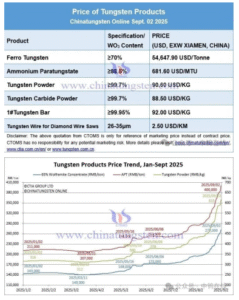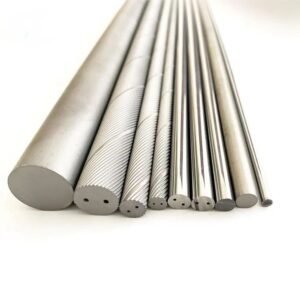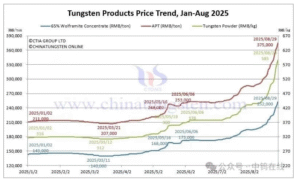Introduction
In the manufacturing industry, the cutting process is a fundamental operation that directly affects the quality, efficiency, and cost of production. Hard alloy inserts, made primarily of tungsten carbide, are vital tools that significantly impact the success of these operations. This article will explore how hard alloy inserts influence the cutting force, surface quality, and overall machining efficiency, and how their advanced properties enhance the entire cutting process.
Understanding Cutting Forces and Their Impact on Machining
Cutting forces refer to the mechanical forces generated during the cutting process, which influence the cutting tool and the workpiece. The magnitude and direction of cutting forces affect the tool wear, surface finish, and dimensional accuracy of the machined part. Proper control and management of cutting forces are critical for improving machining efficiency and achieving high-quality parts.
- Radial Cutting Force The radial cutting force is the force acting perpendicular to the cutting edge, causing the tool to move away from the workpiece. This force is particularly important in turning and milling operations, as it can lead to deflection and inaccuracies in the part being machined.
- Tangential Cutting Force The tangential cutting force is the force acting along the cutting edge, directly influencing the material removal rate. This force also determines the tool's wear rate and the overall efficiency of the cutting process.
- Axial Cutting Force In drilling and boring operations, the axial cutting force is the force that acts along the axis of the tool. This force is crucial for ensuring stability and preventing tool breakage during deep hole machining.
How Hard Alloy Inserts Influence Cutting Forces
Hard alloy inserts significantly affect cutting forces due to their unique properties. The hardness and wear resistance of tungsten carbide, combined with coatings such as TiN or TiAlN, allow for a sharper cutting edge, which reduces cutting forces in many operations.
- Lower Cutting Forces One of the key benefits of hard alloy inserts is their ability to lower cutting forces. A sharper cutting edge reduces friction between the tool and the workpiece, which lowers the radial and tangential cutting forces. This leads to a smoother cutting process, reduced tool wear, and increased tool life.
- Increased Stability The high hardness and wear resistance of carbide inserts ensure that the tool maintains its shape and sharpness even under heavy cutting forces. This increased stability helps to maintain the accuracy and consistency of the machining process, especially when dealing with difficult-to-machine materials such as titanium alloys or high-strength steels.
- Improved Chip Control Efficient chip control is crucial for optimizing cutting forces. Hard alloy inserts are designed with specific geometries that promote better chip evacuation, preventing chips from interfering with the cutting process. This minimizes the buildup of cutting forces and enhances the overall efficiency of the operation.
Surface Quality and Finish with Hard Alloy Inserts
Surface quality is one of the most critical aspects of any machining process. A high-quality surface finish not only improves the aesthetic appearance of the part but also ensures that the component meets the required functional specifications, such as fit, tolerance, and strength.
- Precision and Dimensional Accuracy Hard alloy inserts maintain their sharp cutting edges for extended periods, which helps achieve high precision and tight dimensional tolerances. This is particularly important in industries like aerospace, automotive, and medical devices, where parts must meet stringent quality standards.
- Smooth Surface Finish The sharp edges and wear resistance of carbide inserts allow for smooth and consistent surface finishes, even at high cutting speeds. This is particularly valuable when machining materials that are prone to rough surfaces, such as cast iron or stainless steel.
- Reduced Surface Defects The stability provided by carbide inserts helps reduce the risk of surface defects, such as burrs, tool marks, and chatter. The consistent cutting edge and precise cutting geometry ensure that the tool operates smoothly, leading to better surface quality.
- Low Cutting Forces for Better Finish The ability of carbide inserts to reduce cutting forces not only extends tool life but also helps minimize surface defects. Lower cutting forces reduce vibrations and tool deflection, both of which are common causes of poor surface finishes.
Enhancing Cutting Efficiency with Hard Alloy Inserts
Cutting efficiency refers to the ability to achieve the desired material removal rate while minimizing energy consumption, tool wear, and production time. Hard alloy inserts enhance cutting efficiency through their superior hardness, thermal conductivity, and wear resistance, which allows for faster cutting speeds and higher material removal rates.
- High Cutting Speeds Hard alloy inserts are capable of handling higher cutting speeds compared to other tool materials, such as high-speed steel (HSS) or ceramic tools. The ability to maintain cutting effectiveness at high speeds results in faster production times and reduced cycle times. This is especially beneficial in industries where time-to-market is critical.
- Reduced Tool Wear and Downtime The durability and wear resistance of carbide inserts contribute to longer tool life and reduced maintenance costs. Inserts that retain their sharpness for longer periods reduce the need for frequent tool changes, leading to less downtime and more efficient production schedules.
- Increased Material Removal Rates (MRR) Carbide inserts' ability to withstand higher cutting forces and maintain cutting sharpness allows for higher material removal rates. This results in increased productivity, as more material can be removed in less time, ultimately improving the overall efficiency of the machining process.
- Energy Efficiency Because carbide inserts allow for faster cutting speeds and reduced friction, the energy required for cutting operations is lower than that of conventional tools. This leads to improved energy efficiency and reduced overall production costs.
Applications and Benefits in Different Industries
Hard alloy inserts are used across a wide range of industries, each with its own specific requirements for cutting forces, surface quality, and efficiency. Some key industries include:
- Automotive Industry In automotive manufacturing, carbide inserts are used for machining engine blocks, transmission parts, and other critical components. The ability to handle high cutting speeds and maintain surface quality is essential for ensuring the precision and durability of automotive parts.
- Aerospace Industry Aerospace components require precise machining with minimal surface defects and high material removal rates. Carbide inserts are commonly used to machine materials like titanium alloys and high-strength steels, which are tough to machine but can be efficiently processed with carbide tools.
- Medical Device Manufacturing In the medical device industry, the quality of surface finish is paramount. Carbide inserts are used for machining surgical instruments, implants, and other medical devices where high precision and smooth surfaces are required.
- Oil and Gas Industry Carbide inserts are used in the oil and gas sector for machining tough materials like high-strength steel and non-ferrous alloys. The ability to handle high cutting forces and resist wear in harsh environments makes carbide inserts a valuable tool for this industry.





